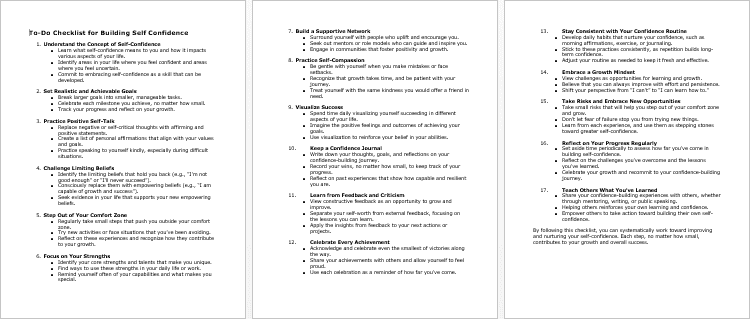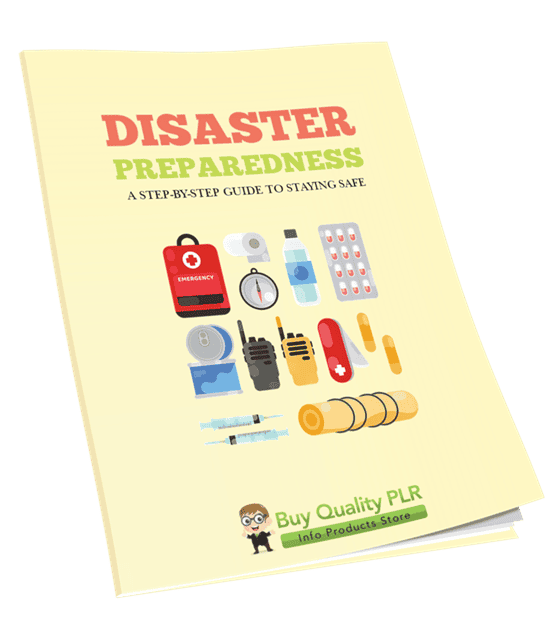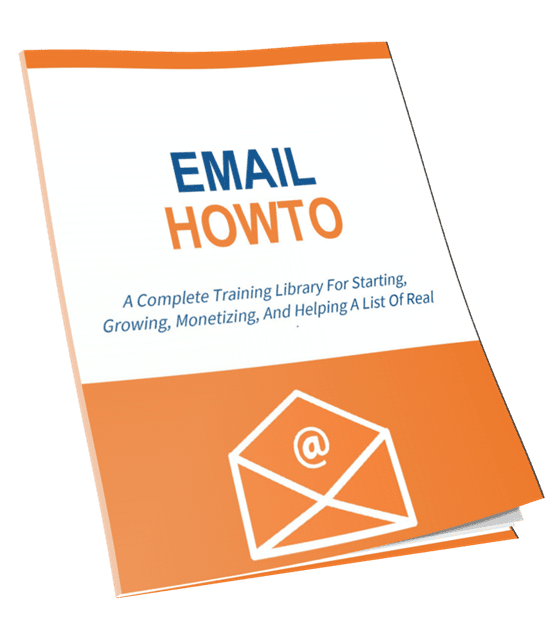
Self Confidence PLR Course 31k Words
in PLR Checklists , PLR eBooks , PLR eCourses , PLR List Building Reports , Premium PLR , Premium PLR eBooks , Premium PLR Reports , Premium White Label Brandable PLR Coaching Courses , Private Label Rights Products , Self Discipline PLR , Self Esteem PLR , Self Improvement PLR , Self Improvement PLR EbooksChoose Your Desired Option(s)
has been added to your cart!
have been added to your cart!
#selfconfidenceplr #plrcourse #confidenceboost #selfimprovement #personalgrowth #mindsetmatters #successmindset #motivation #plrcontent
Empower Your Audience to Build Unshakable Confidence While Monetizing This In-Demand Topic!
Confidence is the foundation of success in career, relationships, and personal growth. Millions of people are searching for ways to boost their self-esteem, overcome fear, and develop a confident mindset.
With this Self-Confidence PLR Course, you get a professionally created, ready-to-sell training program that helps individuals unlock their full potential. Simply download, customize, and start profiting!
Presenting…
Self Confidence PLR Course 31k Words
Why Should You Invest in This PLR Course?
✔ Completely Done-for-You – No need to write content or do research. This course is ready to go!
✔ Evergreen & High-Demand Topic – Self-confidence is a universal need, making it a profitable niche all year round.
✔ Multiple Monetization Opportunities – Sell it as an online course, coaching program, eBook, or digital product on your site.
✔ Position Yourself as an Authority – Provide valuable insights and confidence-building strategies to grow your audience and credibility.
✔ Instantly Sellable & Scalable – No waiting! Just download, brand, and start selling today.
What’s Inside the Self-Confidence PLR Course?
Module 1: Understanding Self-Confidence
Building self-confidence starts with self-awareness. This module lays the foundation for a positive and strong mindset.
- Defining Self-Confidence – Learn what real confidence looks like and why it’s essential for personal and professional success.
- Recognizing Your Current Confidence Level – Assess strengths and weaknesses to understand where growth is needed.
- Identifying Limiting Beliefs – Pinpoint and challenge negative thought patterns that block confidence.
- Harnessing the Power of Positive Self-Talk – Develop mindset shifts that replace self-doubt with empowering thoughts.
Module 2: Building Confidence from Within
True confidence comes from self-acceptance and personal growth. This module guides learners to develop lasting self-belief.
- Embracing Self-Acceptance – Shift from self-criticism to self-compassion by focusing on personal strengths.
- Setting Realistic Goals – Learn how small, achievable steps create momentum and reinforce self-confidence.
- Practicing Self-Compassion – Overcome self-doubt and fear of failure by learning to embrace imperfections.
- Celebrating Small Wins – Acknowledge progress and build confidence by recognizing achievements along the way.
Module 3: Overcoming Fear and Doubt
Fear is the biggest obstacle to confidence. This module teaches proven techniques to overcome doubt and take bold actions.
- Understanding the Source of Fear – Identify where fear comes from and how it influences behavior.
- Reframing Negative Thoughts – Replace self-doubt with positive, success-driven affirmations.
- Visualizing Success – Use mental imagery to train the mind for confidence and resilience.
- Taking Small Risks – Step out of the comfort zone by tackling challenges in manageable, confidence-building steps.
Module 4: Strengthening Confidence Through Action
Action fuels confidence. This module provides practical exercises to develop confidence in real-life situations.
- Stepping Out of the Comfort Zone – Engage in new experiences and challenges to build mental toughness.
- Developing a Growth Mindset – Shift from “I can’t” to “I can learn” with powerful mindset strategies.
- Learning from Criticism – Turn feedback into a tool for growth and confidence instead of a source of fear.
- Surrounding Yourself with Positive Influences – Build a support network of people who encourage and uplift.
Module 5: Maintaining and Expanding Confidence
Confidence is a lifelong journey. This module helps learners maintain progress and continue growing.
- Establishing a Confidence Routine – Create daily habits like affirmations, goal-setting, and mindfulness to strengthen confidence.
- Pushing Boundaries for Growth – Continue challenging self-imposed limits to expand comfort zones.
- Reflecting on Progress – Track personal growth and adjust strategies for continued success.
- Teaching Confidence to Others – Reinforce confidence by sharing lessons with others, which solidifies learning.
How You Can Profit from This PLR Course
💰 Sell It as an Online Course – Set up a self-confidence coaching program and start generating sales immediately.
💰 Offer It as a 1-on-1 Coaching Program – Teach clients how to build confidence, overcome fear, and succeed in life.
💰 Turn It Into an eBook or Digital Guide – Convert the course into a downloadable product to sell on Amazon Kindle or your website.
💰 Include It in a Membership Site – Provide ongoing support by offering this course as premium content.
💰 Repurpose for Blog Content & Lead Magnets – Use sections of the course for blog posts, newsletters, or free guides to attract new leads.
💰 Bundle It with Personal Development Courses – Combine it with goal-setting, motivation, or success coaching programs for more value.
What’s Included in Your Self-Confidence PLR Package?
✅ Comprehensive Course Content (29,459 Words) – Fully researched, structured, and ready for publishing.
✅ Self-Confidence Checklist (744 Words) – A step-by-step guide to keep learners on track.
✅ Comprehensive FAQs Document (938 Words) – Answers to common self-confidence challenges.
✅ Done-for-You Sales Page (968 Words) – High-converting sales copy to start selling immediately.
Start Selling or Teaching This Course Today!
This Self-Confidence PLR Course is the perfect product to help individuals break through self-doubt, develop confidence, and take control of their lives.
Whether you’re a coach, course creator, blogger, or entrepreneur, this done-for-you digital product allows you to instantly monetize a high-demand topic without any content creation.
No writing, no research, no hassle—just download, brand, and sell!
👉 Get Your Copy Now & Start Profiting Today!
has been added to your cart!
have been added to your cart!
Here A Sample of Self Confidence PLR Course
A Step-by-Step Guide to Boost Your Confidence and Unlock Your Potential
Module 1: Understanding Self-Confidence
Step 1: Define Self-Confidence
Self-confidence is one of the most important traits you can cultivate as a course creator, as it influences every aspect of your personal and professional life. In this step, we are going to dive deep into what self-confidence really means and how it plays a crucial role in your ability to succeed and impact others.
1. Understanding the Essence of Self-Confidence
Self-confidence is the belief in your own abilities, judgment, and the value you bring to the table. It’s an internal state where you trust yourself to take action, make decisions, and navigate life’s challenges without being overly dependent on others for validation or approval. Simply put, self-confidence means trusting that you are capable of achieving your goals and handling whatever comes your way.
This belief isn’t based on perfection or the absence of doubts but on understanding that setbacks, mistakes, or failures are part of growth. Confidence comes from knowing that you have the resilience and skills to learn from these experiences, improve, and keep moving forward.
As a course creator, this belief in yourself directly impacts how you approach your work, market your courses, and interact with your students. When you believe in your abilities, you’re more likely to take risks, try new things, and communicate your ideas with conviction. Without self-confidence, you may hesitate to take action or second-guess yourself, which could prevent you from reaching your full potential.
2. The Difference Between Self-Confidence and External Validation
A key aspect of self-confidence is that it comes from within, not from external sources. Many people often confuse self-confidence with the need for approval or validation from others. External validation comes from seeking praise, acknowledgment, or acceptance from other people, such as your audience, colleagues, or peers. While external feedback is important for growth, relying on it for your self-worth can lead to insecurity.
Self-confidence, however, is independent of these external factors. It is about trusting that you have value and potential, regardless of whether someone else recognizes it immediately. As an international course creator, this means that your confidence should not hinge on the number of likes, shares, or comments you receive on your content. Instead, it should come from knowing that you are providing value and that your efforts will pay off in time.
3. Key Components of Self-Confidence
There are several key components that contribute to building and sustaining self-confidence:
- Self-Awareness: Understanding your strengths, weaknesses, values, and limitations allows you to navigate challenges with clarity. It’s about knowing what you’re good at and being honest about areas you can improve.
- Self-Efficacy: This refers to the belief in your ability to succeed in specific situations. For example, as a course creator, self-efficacy would mean believing that you can create, market, and sell a successful online course.
- Resilience: Confident individuals are resilient. They don’t let failures, setbacks, or negative feedback derail them. They see challenges as opportunities to learn and grow, and they bounce back stronger after each experience.
- Self-Acceptance: This means embracing who you are with all your strengths and flaws. Confident people accept that they are not perfect, but that doesn’t diminish their worth. They acknowledge their imperfections as part of their unique identity.
4. Why Self-Confidence Matters for Course Creators
As a course creator, your self-confidence impacts not only how you feel about your work but also how your audience perceives you. When you have self-confidence, you are more likely to take bold steps, such as creating high-quality content, pricing your courses fairly, and marketing them with conviction. These actions demonstrate your belief in the value you offer, which in turn builds trust with your audience.
Here’s why self-confidence matters for course creators:
- Attracts Clients: People are more likely to engage with someone who exudes confidence in their expertise. A confident course creator appears credible, trustworthy, and competent.
- Helps You Persist Through Challenges: The course creation process can be challenging, from designing content to marketing it and managing students. Self-confidence helps you stay focused and committed to your goals, even when things get tough.
- Empowers You to Set Boundaries: Confident course creators are able to set clear, healthy boundaries with clients, students, and even business partners. This ensures that you respect your time, energy, and resources, which is crucial for maintaining long-term success.
- Enables You to Take Calculated Risks: With self-confidence, you are more willing to take calculated risks. Whether it’s exploring new teaching formats, launching new course topics, or expanding your reach to an international audience, confidence fuels your ability to step out of your comfort zone and explore new opportunities.
5. Building Self-Confidence as a Course Creator
Now that we’ve defined what self-confidence is and why it matters, let’s explore how you can begin to build and cultivate this essential trait.
- Start Small: Begin by focusing on small successes. Every positive experience, no matter how minor, reinforces your belief in yourself. It could be finishing a module, receiving positive feedback from a student, or completing a task you found challenging.
- Practice Positive Affirmations: Use positive affirmations to remind yourself of your strengths and achievements. Telling yourself things like, “I am capable,” or, “I provide value,” can help you retrain your mind to focus on the positive.
- Surround Yourself with Supportive People: Engage with other course creators or mentors who support your growth. A positive and encouraging environment can make a huge difference in boosting your confidence.
- Keep Learning and Growing: The more knowledge and skills you acquire, the more confident you will feel in your abilities. Make continuous learning a part of your journey as a course creator.
- Embrace Failure as Part of Growth: Understand that mistakes and failures are part of the learning process. Each failure is a stepping stone towards success. Being able to accept failure without letting it shake your self-belief is a key aspect of confidence.
6. Conclusion
In this step, we’ve taken a deep dive into defining self-confidence, understanding its components, and why it is critical for you as a course creator. Self-confidence is not just about feeling good; it’s about knowing that you are capable, valuable, and resilient, no matter the challenges that come your way. By focusing on developing a strong, internal belief in yourself and your abilities, you’ll be better equipped to create and deliver impactful courses, build meaningful relationships with your students, and ultimately succeed in your online business.
As you continue through this course, remember that self-confidence is a journey, not a destination. With every step you take towards embracing and cultivating your self-confidence, you’re setting yourself up for greater success and fulfillment as a course creator.
Step 2: Recognize Your Current Confidence Level
In this step, we will focus on understanding where you currently stand in terms of self-confidence. This process involves taking a detailed, honest assessment of your current mindset, identifying areas where you feel confident, and recognizing areas where you may experience self-doubt or hesitation. By reflecting on both your strengths and challenges, you will gain clarity on the areas that need attention and the aspects you can build upon as you work on boosting your self-confidence.
1. Why It’s Important to Assess Your Current Confidence Level
Recognizing your current confidence level is the first step in building a stronger, more resilient mindset. Before you can make improvements, you need to understand where you are starting from. Self-confidence isn’t a fixed trait—it can fluctuate depending on the situation, the people around you, and your own internal dialogue. By being honest with yourself and reflecting on your past experiences, you can pinpoint the exact areas where you are strong and where you might need more focus or growth.
As an international course creator, this step is particularly important because your confidence affects how you present yourself in your courses, how you interact with students, and how you handle challenges. Whether you are teaching students from different cultures, launching new course topics, or engaging in marketing activities, your confidence influences how others perceive you and how much value they place on your offerings.
2. Step-by-Step Instructions for Assessing Your Confidence Level
Step 2.1: Reflect on Past Successes
Start by acknowledging your past achievements. These successes, no matter how big or small, are concrete reminders of your abilities and the value you bring to the table. By recognizing your past wins, you can reinforce the belief that you are capable of succeeding again.
To reflect on your past successes:
- List Your Achievements: Write down all the accomplishments you’ve had in your life and career—both personal and professional. This could include things like creating and launching a successful course, receiving positive feedback from students, achieving sales goals, or gaining recognition in your field.
- Highlight Key Milestones: Focus on key milestones that directly reflect your confidence in your work. For example, if you’ve had a successful course launch, receiving positive feedback from your students, or seeing your course content resonate with your target audience, these moments show that you have the ability to achieve what you set out to do.
- Celebrate Your Growth: Take a moment to appreciate how far you’ve come. Reflecting on the progress you’ve made over time is crucial for reinforcing a positive self-image. Even if some of your past projects didn’t go perfectly, consider the lessons you learned from them. Every challenge you’ve overcome has contributed to your growth.
Step 2.2: Evaluate Areas Where You Feel Less Confident
Once you’ve reflected on your successes, it’s time to examine the areas where you feel less confident. This step is just as important because recognizing these areas will give you the insight needed to address them and improve over time. It’s crucial not to shy away from these feelings of doubt. By bringing them to light, you can begin to understand why they exist and how you can work through them.
To evaluate your areas of less confidence:
- Identify Specific Situations: Think about situations where you feel less confident. Do you feel uneasy when promoting your courses or handling student inquiries? Is there a particular aspect of your course creation process—like writing content or designing materials—that causes self-doubt? Be specific about these areas so you can address them directly.
- Assess Your Emotional Response: Pay attention to how you feel when you experience these moments of doubt. Are you nervous, anxious, or overwhelmed? Recognizing your emotional response will help you understand the underlying fears or uncertainties that are affecting your confidence.
- Challenge Negative Thoughts: Often, our lack of confidence stems from negative thoughts or beliefs. Are there any recurring thoughts that make you feel less capable? For instance, do you ever think, “I’m not experienced enough to create this course,” or “What if no one buys my course?” Identifying these thoughts is the first step in transforming them.
Step 2.3: Seek Feedback from Others
Sometimes, it’s hard to assess our own confidence level accurately because we are too close to the situation. Seeking feedback from others can provide a fresh perspective. In the case of course creators, feedback from students, peers, or mentors can be incredibly helpful in determining how you’re perceived and where you can improve.
To gather feedback:
- Ask for Constructive Criticism: Reach out to a few trusted colleagues, mentors, or students and ask them for feedback on your courses, teaching style, or overall presentation. Constructive criticism will give you clear insights into where you are excelling and where there may be room for improvement.
- Review Testimonials and Student Feedback: If you’ve received testimonials or feedback from past students, review them. What do they say about your courses? Are there any recurring themes or compliments that highlight your strengths? Similarly, if you receive constructive criticism, take note of the areas where improvement is needed.
- Take an Objective Approach: When reviewing feedback, try to detach yourself emotionally. Focus on the actionable advice that can help you grow and strengthen your confidence in those areas that require attention.
Step 2.4: Compare Confidence in Different Areas of Your Life
It’s important to recognize that self-confidence can vary in different aspects of your life. As a course creator, you may feel confident in certain areas but less so in others. For example, you might be great at designing engaging course content, but you might struggle with marketing your courses or speaking in front of an audience. Understanding how your confidence levels differ can give you a more well-rounded view of yourself.
To compare confidence in different areas:
- Break Down Your Course Creation Process: Look at each step of creating and delivering your course—content creation, marketing, student engagement, etc. Where do you feel most confident? Where do you hesitate?
- Assess Your Personal Life: Confidence isn’t confined to your professional life. Think about how confident you feel in other areas, such as social situations, relationships, or personal development. A lack of confidence in one area may spill over into others, so understanding the bigger picture will help you address the root causes of self-doubt.
- Identify Patterns and Triggers: As you analyze these different areas, you may begin to notice patterns or triggers. For example, you might feel more confident when working alone but less confident when interacting with large groups. Identifying these patterns can help you understand what influences your confidence and take proactive steps to address it.
3. Reflect on Your Findings and Draw Conclusions
Once you’ve taken the time to reflect on your successes, evaluate areas where you feel less confident, seek feedback from others, and compare your confidence levels in different aspects of your life, it’s time to draw some conclusions. Take a step back and assess your findings:
- Acknowledge Your Strengths: Celebrate the areas where you feel confident and capable. This will help reinforce your belief in yourself and motivate you to continue building on these strengths.
- Identify Areas for Growth: Understand that it’s perfectly normal to have areas of your life or business where you feel less confident. These areas are opportunities for growth, not weaknesses. By identifying these areas, you can take targeted actions to improve.
- Create an Action Plan: With this newfound clarity, you can create a roadmap for enhancing your confidence. Focus on the areas where you feel least confident and take actionable steps to improve, whether through further education, practice, or seeking mentorship.
4. Conclusion
Recognizing your current confidence level is an essential step in the journey to building stronger self-confidence. By reflecting on past successes, identifying areas of doubt, seeking feedback, and comparing your confidence in various areas of life, you gain valuable insights that will empower you to take action. This self-awareness allows you to work on specific areas for improvement, helping you grow as a course creator and as an individual. The more honest and proactive you are in assessing your confidence, the better equipped you will be to unlock your full potential.
Step 3: Identify Limiting Beliefs
In this step, we will explore how to identify and address limiting beliefs that hold you back from fully embracing your potential. Limiting beliefs are those deep-rooted thoughts or convictions that often go unnoticed but significantly affect your actions, decisions, and, most importantly, your self-confidence. They form a barrier between where you are and where you want to be. By identifying and understanding these beliefs, you can begin to challenge and transform them, empowering yourself to take bold steps forward in both your personal and professional life as a course creator.
1. What Are Limiting Beliefs?
Limiting beliefs are the thoughts and convictions we hold that prevent us from fully utilizing our potential. These beliefs are often self-imposed and are based on past experiences, societal influences, or internal fears. For example, you might believe that you’re not skilled enough to create a successful online course, that your accent is too strong for an international audience, or that you’re not qualified to teach a particular subject.
In reality, these beliefs are often untrue or exaggerated, but they can deeply influence your actions, shaping how you approach challenges, how much you put yourself out there, and how you view your worth. As an international course creator, these limiting beliefs can significantly impact how you design, market, and deliver your courses. They may even prevent you from sharing your expertise with a global audience or building the business you envision.
We’re also giving these extra bonuses
Self Confidence – Checklist

Self Confidence – FAQs

Self Confidence – Salespage Content

Package Details:
Word Count: 29 459 Words
Number of Pages: 95
Self Confidence – Bonus Content
Checklist
Word Count: 744 words
FAQs
Word Count: 938 words
Salespage Content
Word Count: 968 words
Total Word Count: 32 109 Words
Your PLR License Terms
PERMISSIONS: What Can You Do With These Materials?
Sell the content basically as it is (with some minor tweaks to make it “yours”).
If you are going to claim copyright to anything created with this content, then you must substantially change at 75% of the content to distinguish yourself from other licensees.
Break up the content into small portions to sell as individual reports for $10-$20 each.
Bundle the content with other existing content to create larger products for $47-$97 each.
Setup your own membership site with the content and generate monthly residual payments!
Take the content and convert it into a multiple-week “eclass” that you charge $297-$497 to access!
Use the content to create a “physical” product that you sell for premium prices!
Convert it to audios, videos, membership site content and more.
Excerpt and / or edit portions of the content to give away for free as blog posts, reports, etc. to use as lead magnets, incentives and more!
Create your own original product from it, set it up at a site and “flip” the site for megabucks!
RESTRICTIONS: What Can’t You Do With These Materials?
To protect the value of these products, you may not pass on the rights to your customers. This means that your customers may not have PLR rights or reprint / resell rights passed on to them.
You may not pass on any kind of licensing (PLR, reprint / resell, etc.) to ANY offer created from ANY PORTION OF this content that would allow additional people to sell or give away any portion of the content contained in this package.
You may not offer 100% commission to affiliates selling your version / copy of this product. The maximum affiliate commission you may pay out for offers created that include parts of this content is 75%.
You are not permitted to give the complete materials away in their current state for free – they must be sold. They must be excerpted and / or edited to be given away, unless otherwise noted. Example: You ARE permitted to excerpt portions of content for blog posts, lead magnets, etc.
You may not add this content to any part of an existing customer order that would not require them to make an additional purchase. (IE You cannot add it to a package, membership site, etc. that customers have ALREADY paid for.)
Share Now!












